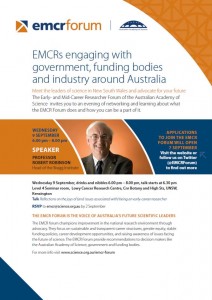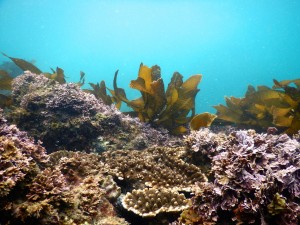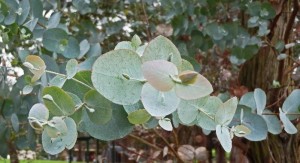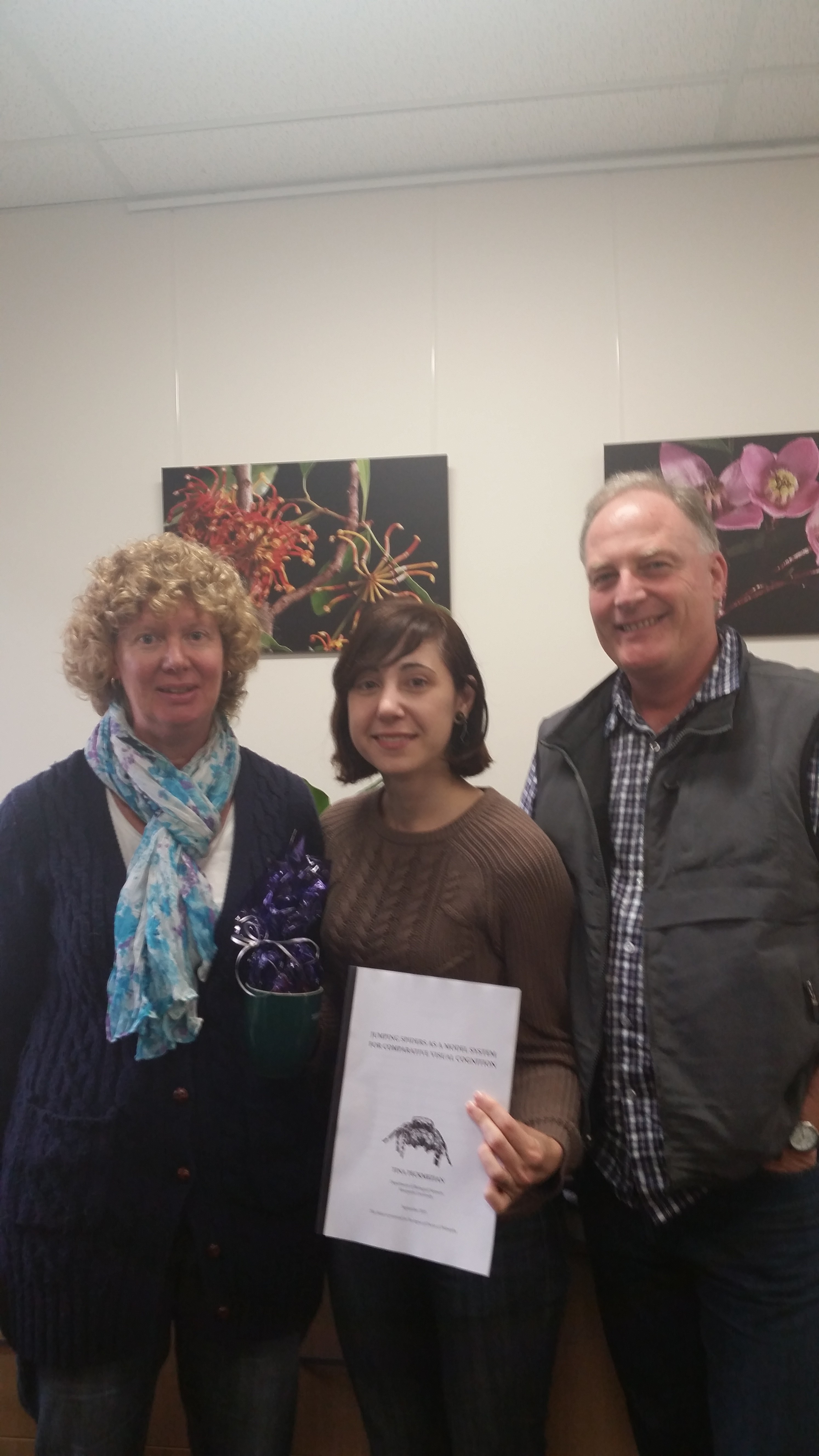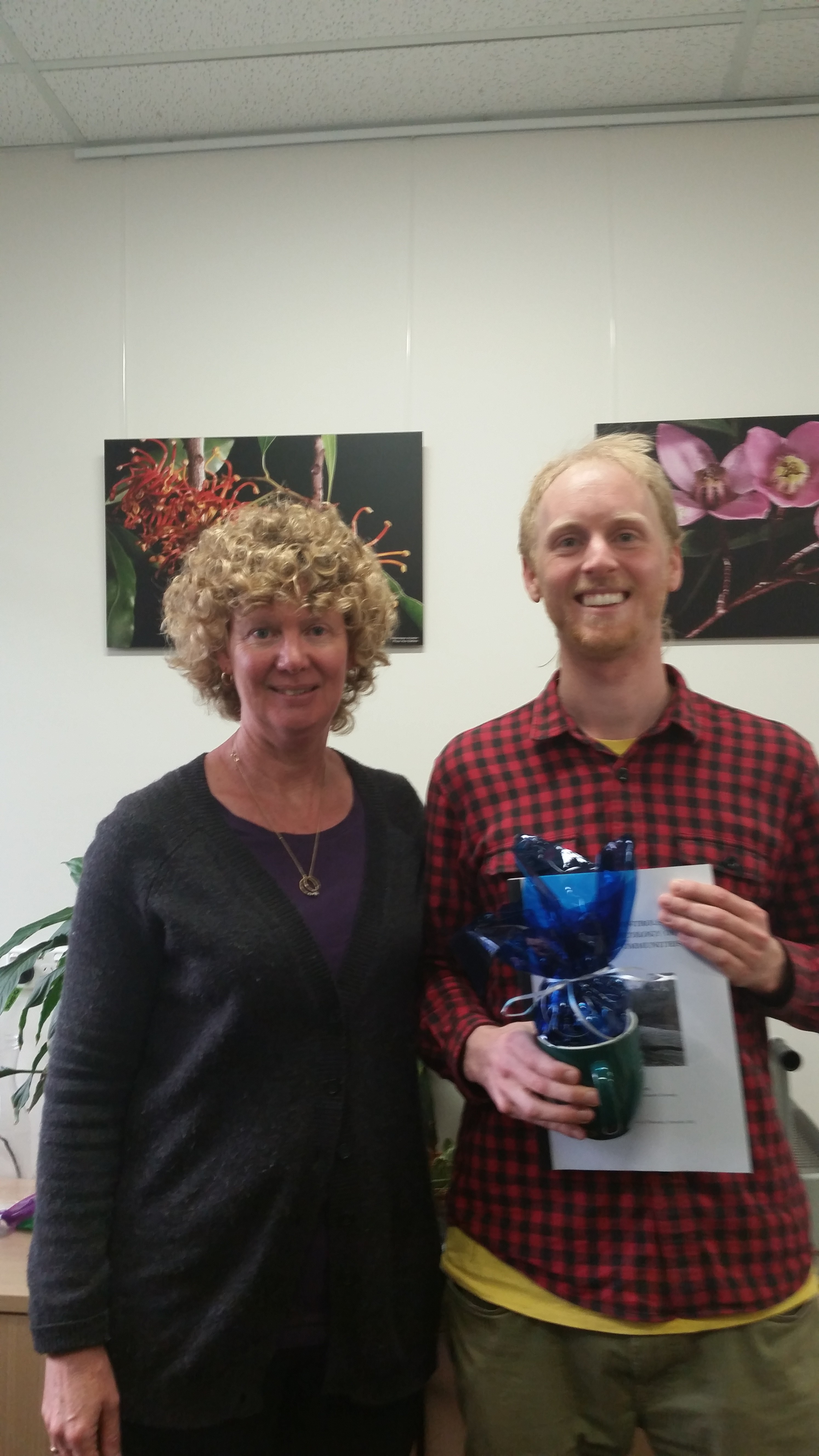The hydraulic architecture of Eucalyptus trees growing across a gradient of depth-to-groundwater
Zolfaghar, S., R. Villalobos-Vega, M. Zeppel, and D. Eamus. 2015. The hydraulic architecture of Eucalyptus trees growing across a gradient of depth-to-groundwater. Functional Plant Biology 42:888-898. | Find with Google Scholar »
|
Dear all,
Thanks to all who came along to our monthly Dept meeting – you can find the slides from the Department Meeting here and the slides for the cotutelle presentation here.
We are gearing up for the annual HDR conference 14-15 September, including looking for judges for the student prizes. If you are a postdoc in the Department and would like some experience in organising and judging prizes, plus working with a great group of other postdocs and research fellows, please let me know!
Still looking for volunteers to organise the Biology social event of the year – the Xmas Party! Come on, indulge your inner event planner self and make me an offer!
I’m putting together the list of schools we would like to build relationships with – some were mentioned at the Dept meeting but if you have other suggestions, please let me know.
cheerio
Michelle
General News and Announcements
Consideration of Macquarie moving email from Gmail to Outlook – have your say
Dance-your-PhD contest for Christmas party
To our dear and cherished HDR students:
It is time to limber up your creative spirits and merge art with science. The Dance-your-PhD contest in on for the Christmas party 2015 for infotainment. The Department is offering $200 research money to the best depiction of a PhD, as judged by a panel of ‘experts’.
Time and place: Department Christmas party
Rules
1) 5 minutes maximum limit.
2) An entry belongs to the student whose PhD is being depicted. No limit to the number of additional helpers. So help each other out by dancing in each other’s entries.
3) Ken Cheng will sing simple songs if you would like a song to go with your dance (possibly needing music sheets). He can even help with lyrics. Of course, anyone else can sing too.
4) Otherwise, anything goes (subject to decorum).
Send your intention of entry, hopefully along with the music track for your entry, to Ken Cheng <ken.cheng@mq.edu.au > by 1 December.
p.s. Anyone else is welcome to dance a current research project (but no prizes).
University of Canterbury – Job Opportunity
Applications are invited for the continuing position of Lecturer/Senior Lecturer in Biological Sciences (Animal Structure-Function-Environment) in the School of Biological Sciences at the University of Canterbury, Christchurch, New Zealand. This is equivalent to a (tenured) Assistant Professor in the US system.
We seek an animal biologist who will apply modern approaches and augment our existing strengths. The successful applicant will be capable of running effective lab- and/or field-based research and teaching programmes and be broadly trained in animal biology and associated laboratory skills. He/she will have a high level of skill in a related sub-discipline such as animal behaviour, aquatic biology, environmental physiology, environmental toxicology or global change biology. See here for further information. Applications close 20 September.
September SCB Sydney Conservation Cafe
When: September 5, 10:00am
Where: Learning Centre, Centennial Parklands
Early- and Mid-Career Researcher Forum
Ph.D. Student Seeking Accommodation
Hi, I am Ravindra and soon-to-be a Macquarie University grad student in Biology. I am looking for a room in a shared accommodation, preferably near to the Uni, from October 17th. I am a friendly and responsible guy looking forward to live among people from different cultures, preferably non-smokers. If you have a room available or for further info, please mail me: rvndrpn@gmail.com. Thanks, Ravindra
Post-doctoral Research Fellow – Animal Husbandry
Aberystwyth University. Bangor, Wales, United Kingdom. See here for more information (you’ll need a ResearchGate log in).
Outreach Activities
A quick reminder to send Rekha (rekha.joshi@mq.edu.au) a list of outreach activities you may have done so far in 2015. Please include following details.
• date
• name of activities
• for whom (name of school or organisation)
• number of participant
• any other details.
Vehicle Use Request
Dear Biology vehicle users,
Can you please use the BL45UU 4*2 ute parked up on the hill for fieldwork activities, only when other utes parked in the F5B parking compound are unavailable. The car parked on the hill is mainly for the convenience of the users stationed there – to drive to meetings, move equipment, run errands. Your co-operation is appreciated
Regards,
Tarun Rajan
The Snorkelling Manual and procedures are now official
The Snorkelling Manual is now registered under the University’s Work Health & Safety Management System and has been allocated Document Number 120. I am pleased therefore to advise that the manual is now operational and all snorkeling undertaken for the University is required to be undertaken in accordance with this manual.
The living version of the manual is here. Additional information on snorkeling is available via the marine science web page here.
Matt Kosnik
Academic Workload Model Development
The Faculty is currently developing a new workload model that incorporates research and service as well as teaching. A Faculty Academic Workload Model group has been formed, chaired by Mariella and including the Dean, Ian Marschner, Michael Hitchens, Bernard Mans and David Coutts as members. The group is now looking for representatives from each department and at a range of academic levels to join the group.
Please let me (michelle.leishman@mq.edu.au) know as soon as possible (by Tuesday Sept 9) if you would be willing to join the Academic Workload Model Group. The next meeting will be scheduled in approximately two weeks.
Franklin Women’s Mentoring Breakfast
Franklin Women would like to invite you to their upcoming event ‘Franklin Women’s Mentoring Breakfast’, on Wednesday 30th September at The Tea Rooms QVB. The event is on Mentoring. Not only do we have leadership expert, Maud Lindley, as our guest speaker but we have also brought together leading women across the health and medical research sector who will be joining us as ‘table mentors’ to share their personal experience and advice. All details on the flyer here and our website (www.franklinwomen.com.au). Hope to see you there!
Who is Franklin Women? We are a professional community for women working in health and medical research careers. Our aim is to bring like-minded women together to offer each other support, create new career connections and learn new career skills outside of the technical sciences. Oh, and to have a bit of fun, too! You see what we are about here: www.franklinwomen.com.au and can follow us on Facebook and Twitter.
Research Infrastructure Block Grants
The Research Infrastructure Block Grants Scheme is now open. RIBG is funded from an institutional block grant provided by the Commonwealth Government. The purpose of the RIBG Scheme is to enhance the development and maintenance of research infrastructure in higher education institutions for the support of high-quality research in all disciplines.
The main objectives for the Scheme as set by the government are to:
· Remedy deficiencies in current research infrastructure;
· Enhance support for areas of research strength; and
· Ensure that areas of recognised research potential, in which institutions have taken steps to initiate high quality research activity, have access to the support necessary for development.
Please refer to the Research Office Webpage for full information and application materials.
Faculty of Science and Engineering application process: please email complete draft applications for review and feedback to sci.research@mq.edu.au by 28 September 2015
Also let our research committee know if you plan to apply – email melanie.bishop@mq.edu.au
Department Seminar for Sept. 9, 1-2pm in the Biology Tea Room (E8A 280)
Title: Climate-mediated shifts in herbivory and the tropicalisation of temperate reefs: a global perspective
Abstract: Climate-driven changes in species interactions can profoundly alter ecological communities, particularly when they impact foundation species. In marine systems, changes in plant-herbivore interactions can lead to the loss of dominant habitat forming species such as corals when tropical fish herbivory decreases, or to declines in algal forests when temperate urchin grazing increases. Here, I will propose a novel type of phase-shift caused by tropical herbivores extending their distribution and overgrazing the canopy forming algae that typically dominates shallow temperate reefs. I will consider the oceanographic conditions that create ocean warming hotspots around the globe, highlighting the role of western boundary currents that transport warm tropical water into temperate regions and facilitate the range expansion of warm water species. Focusing on emerging patterns quantified along the eastern coast of Australia and southern Japan, I will show how ocean warming has been linked to an increase in fish grazing in temperate latitudes and the loss of kelp forests near the warm edge of their distribution. I will briefly examine the broader implications of this novel phase shift and potential management responses, including the restoration of algal forests.
Volunteers List
A new version of the volunteers list can be found here.
In the coming week the Department will be launching a Facebook Page. Please send (Hannah – hannah.woodrow-clark@mq.edu.au) any content you may have for the page such as photographs from Open Day, Field trips and any Field work. If you have any great photos use #biomacuni when posting them on social media.
Do you believe you have found the cutest animal? You can post the photos on social media with #cuteoff as scientists try to determine what indeed is the cutest animal.
New Publications
The influence of biological soil crusts on N-15 translocation in soil and vascular plant in a temperate desert of northwestern China
Zhuang, W., A. Downing, and Y. Zhang. 2015. The influence of biological soil crusts on N-15 translocation in soil and vascular plant in a temperate desert of northwestern China. Journal of Plant Ecology 8:420-428. | Find with Google Scholar »Experimental warming and fire alter fluxes of soil nutrients in sub-alpine open heathland
Yang, Y., Q. Zhu, C. Peng, H. Wang, and H. Chen. 2015. From plant functional types to plant functional traits: A new paradigm in modelling global vegetation dynamics. Progress in Physical Geography 39:514-535. | Find with Google Scholar »Variation in Brain Morphology of intertidal Gobies: A Comparison of Methodologies Used to Quantitatively Assess Brain Volumes in Fish
White, G. E., and C. Brown. 2015. Variation in Brain Morphology of intertidal Gobies: A Comparison of Methodologies Used to Quantitatively Assess Brain Volumes in Fish. Brain Behavior and Evolution 85:245-256. | Find with Google Scholar »Sequential polyandry through divorce and re-pairing in a cooperatively breeding bird reduces helper-offspring relatedness
Warrington, M. H., L. A. Rollins, A. F. Russell, and S. C. Griffith. 2015. Sequential polyandry through divorce and re-pairing in a cooperatively breeding bird reduces helper-offspring relatedness. Behavioral Ecology and Sociobiology 69:1311-1321. | Find with Google Scholar »Dose-dependent effects of metals on gene expression in the sydney rock oyster, Saccostrea glomerata
Taylor, D. A., S. V. Nair, E. L. Thompson, and D. A. Raftos. 2015. Dose-dependent effects of metals on gene expression in the sydney rock oyster, Saccostrea glomerata. Environmental Toxicology 30:989-998. | Find with Google Scholar »Giant Australian cuttlefish use mutual assessment to resolve male-male contests
Schnell, A. K., C. L. Smith, R. T. Hanlon, and R. Harcourt. 2015. Giant Australian cuttlefish use mutual assessment to resolve male-male contests. Animal Behaviour 107:31-40. | Find with Google Scholar »Impact of visual contact on vocal interaction dynamics of pair-bonded birds
Perez, E. C., M. S. A. Fernandez, S. C. Griffith, C. Vignal, and H. A. Soula. 2015. Impact of visual contact on vocal interaction dynamics of pair-bonded birds. Animal Behaviour 107:125-137. | Find with Google Scholar »A virtual reality paradigm for the study of visually mediated behaviour and cognition in spiders
Peckmezian, T., and P. W. Taylor. 2015. A virtual reality paradigm for the study of visually mediated behaviour and cognition in spiders. Animal Behaviour 107:87-95. | Find with Google Scholar »A separate creation: diversity, distinctiveness and conservation of Australian wildlife
Nipperess, D. A. 2015. A separate creation: diversity, distinctiveness and conservation of Australian wildlife. Austral Ark: The State of Wildlife in Australia and New Zealand:1-23. | Find with Google Scholar »Predators in danger: shark conservation and management in Australia, New Zealand and their neighbours
Momigliano, P., V. F. Jaiteh, and C. Speed. 2015. Predators in danger: shark conservation and management in Australia, New Zealand and their neighbours. Austral Ark: The State of Wildlife in Australia and New Zealand:467-491. | Find with Google Scholar »Community structure of reef fishes on a remote oceanic island (St Peter and St Paul’s Archipelago, equatorial Atlantic): the relative influence of abiotic and biotic variables
Luiz, O. J., T. C. Mendes, D. R. Barneche, C. G. W. Ferreira, R. Noguchi, R. C. Villaca, C. A. Rangel, J. L. Gasparini, and C. E. L. Ferreira. 2015. Community structure of reef fishes on a remote oceanic island (St Peter and St Paul's Archipelago, equatorial Atlantic): the relative influence of abiotic and biotic variables. Marine and Freshwater Research 66:739-749. | Find with Google Scholar »Silencing FXYD3 Protein Enhances Cytotoxicity Effect of Doxorubicin and Gamma Irradiation in Human Breast Cancer Cells
Liu, C.-C., J. M. Gebicki, and H. H. Rasmussen. 2014. Silencing FXYD3 Protein Enhances Cytotoxicity Effect of Doxorubicin and Gamma Irradiation in Human Breast Cancer Cells. Free Radical Biology and Medicine 76:S128-S129. | Find with Google Scholar »Down under Down Under: Austral groundwater life
Hose, G. C., M. G. Asmyhr, S. J. B. Cooper, and W. F. Humphreys. 2015. Down under Down Under: Austral groundwater life. Austral Ark: The State of Wildlife in Australia and New Zealand:512-536. | Find with Google Scholar »Age and growth of the tiger shark Galeocerdo cuvier off the east coast of Australia
Holmes, B. J., V. M. Peddemors, A. N. Gutteridge, P. T. Geraghty, R. W. K. Chan, I. R. Tibbetts, and M. B. Bennett. 2015. Age and growth of the tiger shark Galeocerdo cuvier off the east coast of Australia. Journal of Fish Biology 87:422-448. | Find with Google Scholar »Marine mammals, back from the brink? Contemporary conservation issues
Harcourt, R., H. Marsh, D. Slip, L. Chilvers, M. Noad, and R. Dunlop. 2015. Marine mammals, back from the brink? Contemporary conservation issues. Austral Ark: The State of Wildlife in Australia and New Zealand:322-353. | Find with Google Scholar »Pollution by antibiotics and resistance genes: dissemination into Australian wildlife
Gillings, M. 2015. Pollution by antibiotics and resistance genes: dissemination into Australian wildlife. Austral Ark: The State of Wildlife in Australia and New Zealand:186-196. | Find with Google Scholar »Depletion of marine megafauna and shifting baselines among artisanal fishers in eastern Brazil
Giglio, V. J., O. J. Luiz, and L. C. Gerhardinger. 2015. Depletion of marine megafauna and shifting baselines among artisanal fishers in eastern Brazil. Animal Conservation 18:348-358. | Find with Google Scholar »Putative Predators of Carcinus Maenas in Eastern Australia
Garside, C. J., M. A. Coleman, B. P. Kelaher, and M. J. Bishop. 2015. Putative Predators of Carcinus Maenas in Eastern Australia. Estuaries and Coasts 38:1557-1568. | Find with Google Scholar »Invasive plants and invaded ecosystems in Australia: implications for biodiversity
Gallagher, R. V., and M. R. Leishman. 2015. Invasive plants and invaded ecosystems in Australia: implications for biodiversity. Austral Ark: The State of Wildlife in Australia and New Zealand:105-133. | Find with Google Scholar »Marine plastic pollution: using community science to address a global problem
Duckett, P. E., and V. Repaci. 2015. Marine plastic pollution: using community science to address a global problem. Marine and Freshwater Research 66:665-673. | Find with Google Scholar »Phylogenetic uncertainty can bias the number of evolutionary transitions estimated from ancestral state reconstruction methods
Duchene, S., and R. Lanfear. 2015. Phylogenetic uncertainty can bias the number of evolutionary transitions estimated from ancestral state reconstruction methods. Journal of Experimental Zoology Part B-Molecular and Developmental Evolution 324:517-524. | Find with Google Scholar »Potential Mechanisms Driving Population Variation in Spatial Memory and the Hippocampus in Food-caching Chickadees
Croston, R., C. L. Branch, D. Y. Kozlovsky, T. C. Roth, II, L. D. LaDage, C. A. Freas, and V. V. Pravosudov. 2015. Potential Mechanisms Driving Population Variation in Spatial Memory and the Hippocampus in Food-caching Chickadees. Integrative and Comparative Biology 55:354-371. | Find with Google Scholar »Evidence for a Mid-Jurassic Adaptive Radiation in Mammals
Close, R. A., M. Friedman, G. T. Lloyd, and R. B. J. Benson. 2015. Evidence for a Mid-Jurassic Adaptive Radiation in Mammals. Current Biology 25:2137-2142. | Find with Google Scholar »Potential impacts of aquatic pollutants: sub-clinical antibiotic concentrations induce genome changes and promote antibiotic resistance
Chow, L., L. Waldron, and M. R. Gillings. 2015. Potential impacts of aquatic pollutants: sub-clinical antibiotic concentrations induce genome changes and promote antibiotic resistance. Frontiers in Microbiology 6. | Find with Google Scholar »The impacts of climate change on Australian and New Zealand flora and fauna
Cabrelli, A., L. Beaumont, and L. Hughes. 2015. The impacts of climate change on Australian and New Zealand flora and fauna. Austral Ark: The State of Wildlife in Australia and New Zealand:65-82. | Find with Google Scholar »Quinkan Art: Preserving the Deep Past
Beattie, A., A. H. Ehrlich, C. Turnbull, P. R. Ehrlich. 2015. Quinkan Art: Preserving the Deep Past. MAHB. 25-08-2015. | Find with Google Scholar »Revision of the genus Hydroides (Annelida: Serpulidae) from Australia
Sun, Y., E. Wong, H. A. T. Howe, P. A. Hutchings, J. E. Willamson and E. K. Kupriyanova. 2015. Revision of the genus Hydroides (Annelida: Serpulidae) from Australia. Zootaxa 4009 (1): 001–099. | Find with Google Scholar »Connectivity in grey reef sharks (Carcharhinus amblyrhynchos) determined using empirical and simulated genetic data
Momigliano, P., Harcourt, R., Robbins, W., Stow, A. 2015. Connectivity in grey reef sharks (Carcharhinus amblyrhynchos) determined using empirical and simulated genetic data. Nature Scientific Reports 13229 doi:10.1038/srep13229 | Find with Google Scholar »In the Media
Associate Professor Phil Taylor spoke to The Lead about a new biosecurity centre being established to stop fruit flies.
Read more »
Professor Robert Harcourt was interviewed on ABC 702’s Mornings program and Reuters UK on sharks and recent shark attacks in Australia.
Read more »
Associate Professor Culum Brown was featured in the Sunday Canberra Times, the Age and the Namoi Valley Independent on research into the intelligence of fish compared to primates. A/Prof Brown was also interviewed on this topic on 6PR’s Drive program.
Read more »
Siobhan Dennison was interviewed on 2SER’s Breakfast program on the adaptability of killifish, allowing them to survive changing climates and salinity levels.
Read more »


